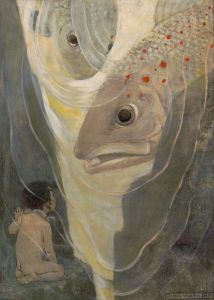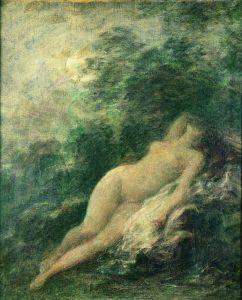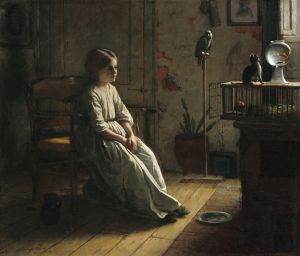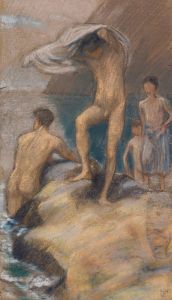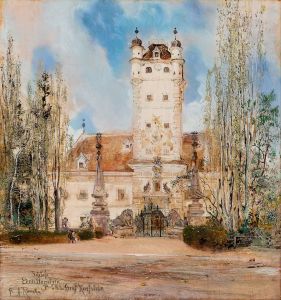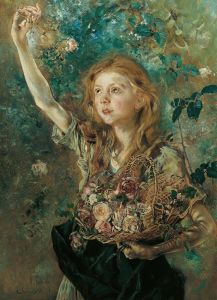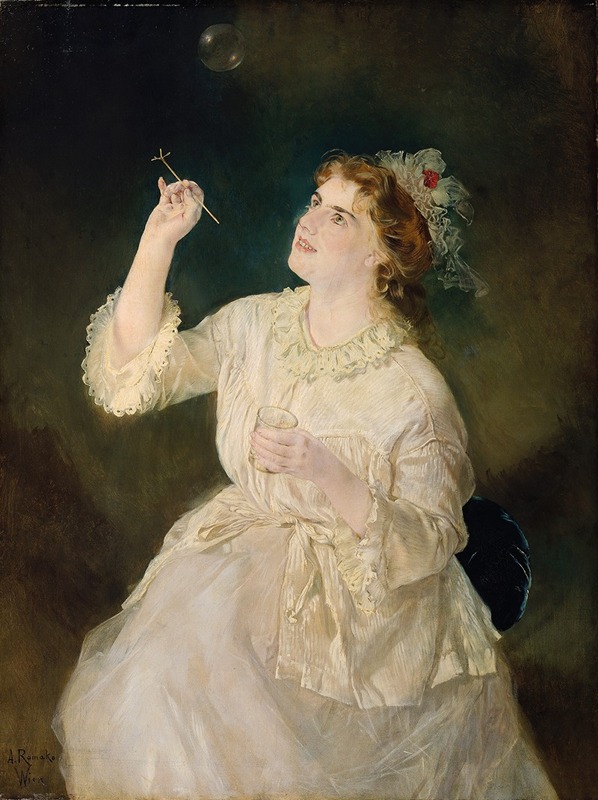
Die Seifenbläserin
A hand-painted replica of Anton Romako’s masterpiece Die Seifenbläserin, meticulously crafted by professional artists to capture the true essence of the original. Each piece is created with museum-quality canvas and rare mineral pigments, carefully painted by experienced artists with delicate brushstrokes and rich, layered colors to perfectly recreate the texture of the original artwork. Unlike machine-printed reproductions, this hand-painted version brings the painting to life, infused with the artist’s emotions and skill in every stroke. Whether for personal collection or home decoration, it instantly elevates the artistic atmosphere of any space.
Anton Romako was an Austrian painter known for his unique style that bridged the Biedermeier period and modernism. One of his notable works is "Die Seifenbläserin" (The Soap Bubble Blower), which exemplifies his innovative approach to portraiture and genre painting. Romako's career was marked by a departure from the traditional academic style that dominated the 19th-century art scene, and "Die Seifenbläserin" is a testament to his distinctive artistic vision.
"Die Seifenbläserin" was painted during a period when Romako was exploring more intimate and personal themes, often focusing on domestic scenes and the subtleties of human expression. The painting depicts a young girl engrossed in the act of blowing soap bubbles, a subject that was popular among artists of the time for its ephemeral and delicate nature. The choice of subject matter reflects a fascination with the fleeting moments of everyday life, capturing a sense of innocence and wonder.
Romako's technique in "Die Seifenbläserin" is characterized by a loose brushwork and a subtle use of color, which together create a soft, almost dreamlike atmosphere. This approach contrasts with the more rigid and detailed style of his contemporaries, highlighting Romako's departure from convention. The composition of the painting is carefully balanced, with the figure of the girl placed slightly off-center, drawing the viewer's eye to the bubbles she creates. The background is kept minimal, ensuring that the focus remains on the subject and her delicate interaction with the bubbles.
The painting is also notable for its psychological depth, a hallmark of Romako's work. The girl's expression is contemplative, suggesting a moment of introspection that invites viewers to ponder her thoughts and emotions. This focus on the inner life of the subject was relatively innovative for the time and contributed to Romako's reputation as a forward-thinking artist.
Romako's career was not without its challenges. Despite his talent, he struggled to gain recognition during his lifetime, as his style was often at odds with the prevailing tastes of the art establishment. It was only later, after his death, that his work began to receive the appreciation it deserved. Today, Romako is regarded as an important figure in the transition from 19th-century realism to the more expressive forms of modern art.
"Die Seifenbläserin" remains a significant work within Romako's oeuvre, exemplifying his ability to capture the subtleties of human emotion and the beauty of everyday moments. The painting is housed in the Österreichische Galerie Belvedere in Vienna, where it continues to be admired by art enthusiasts and scholars alike. Through works like "Die Seifenbläserin," Anton Romako has secured his place in art history as a pioneer who paved the way for future generations of artists seeking to explore the complexities of human experience through their art.





